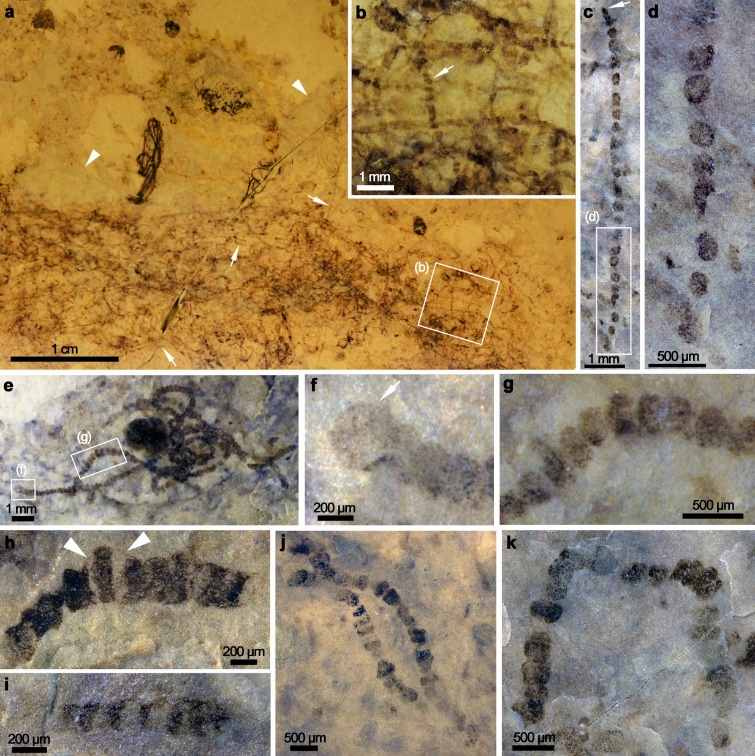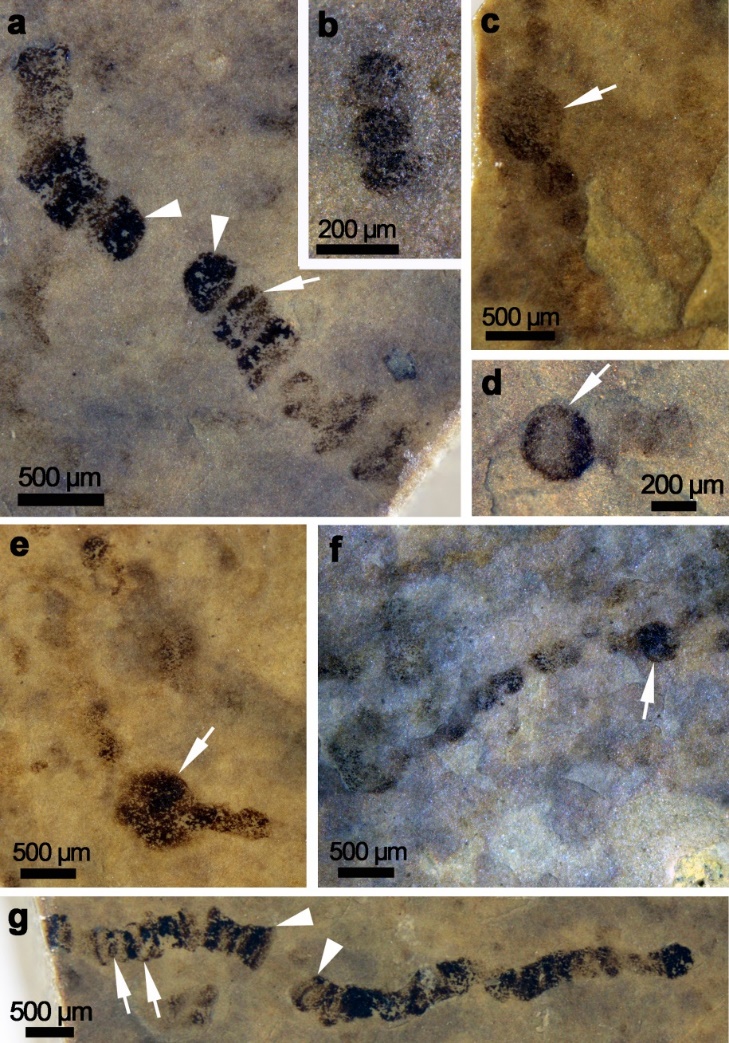
For much of the earth history, cyanobacteria were the only source of biogenic oxygen and a major source of fixed carbon and nitrogen. However, it is still not clear when cyanobacteria began to fix nitrogen.
The finding of new filamentous cyanobacterial fossil from ~1000-720 Ma (million years ago) rocks in North China has brought dawn for the tracking of the first nitrogen-fixing cyanobacteria. The results were published in Current Biology with the title "Nitrogen-fixing Heterocystous Cyanobacteria in the Tonian Period".
The origin of cyanobacteria had profound and transformative impacts on carbon, nitrogen, and oxygen cycles in the earth system. Not only are cyanobacteria (and their evolutionary descendants, algae and plants) the only oxygenic photosynthesizers, many of them have also acquired the capability of fixing dinitrogen and one clade has developed complex multicellularity with specialized nitrogen-fixing cells known as heterocysts and resting cysts known as akinetes. But when this evolutionary innovation occurred is unknown.
Molecular clock estimates of the divergence time of this clade are highly variable, ranging from ~2000-500 Ma. The fossil record of heterocystous (heterocyst-forming) cyanobacteria is scarce and disputed. Most reported heterocyst and akinete fossils from Precambrian rocks (> 541 Ma) are probably diagenetic or taphonomic artifacts. The earliest uncontested fossil record only comes from the early Devonian (~410 Ma) Rhynie Chert.
A team led by Dr. PANG Ke from Nanjing Institute of Geology and Palaeontology (NIGP) of the Chinese Academy of Sciences and TANG Qing from Virginia Tech collected hundreds of specimens from a fossiliferous horizon in the 1000–720 Ma rocks in Shouxian, Anhui Province, China. One of them was named Anhuithrix magna.
The new fossil Anhuithrix was a filamentous and multicellular cyanobacterium that grew by binary cell division, reproduced by fragmentation, weathered adverse conditions by akinetes, and likely fixed nitrogen in specialized heterocysts.
The new fossil represents a compelling record of akinete-forming and implicitly heterocystous and nitrogen-fixing cyanobacteria, and places a firm constraint on the evolution of cellular differentiation among multicellular cyanobacteria in the Tonian Period (1000–720 Ma).
Because nitrogenase (an enzyme responsible for catalyzing nitrogen fixation) is irreversibly inactivated by the presence of free oxygen, the evolution of heterocysts may be an evolutionary response to provide a physical shelter for nitrogenase as O2 level rose.
Thus, not only did cyanobacteria play a significant role in regulating the carbon , oxygen, and nitrogen cycles, their own evolutionary trajectory was modulated by the very oxygen ultimately produced by themselves, highlighting the complex geobiological feedbacks between the biosphere and geosphere.

Paleoecology and general morphology of Anhuithrix magna. (a and b) Microbial mat consisting of densely packed Anhuithrix magna filaments (white arrows). (c and k) Filaments of Anhuithrix magna with multiple cells; a large globose terminal cell (arrow in f) was interpreted as an akinete. (Image by PANG Ke)

Hormogonia, paired cells, and akinetes of Anhuithrix magna. (a) Trichome in the process of fragmentation; note cell pairs (arrow; suggesting binary fission). (b) Short trichome. (c–f) Trichomes with akinetes (arrows). (Image by PANG Ke)

86-10-68597521 (day)
86-10-68597289 (night)

52 Sanlihe Rd., Xicheng District,
Beijing, China (100864)

